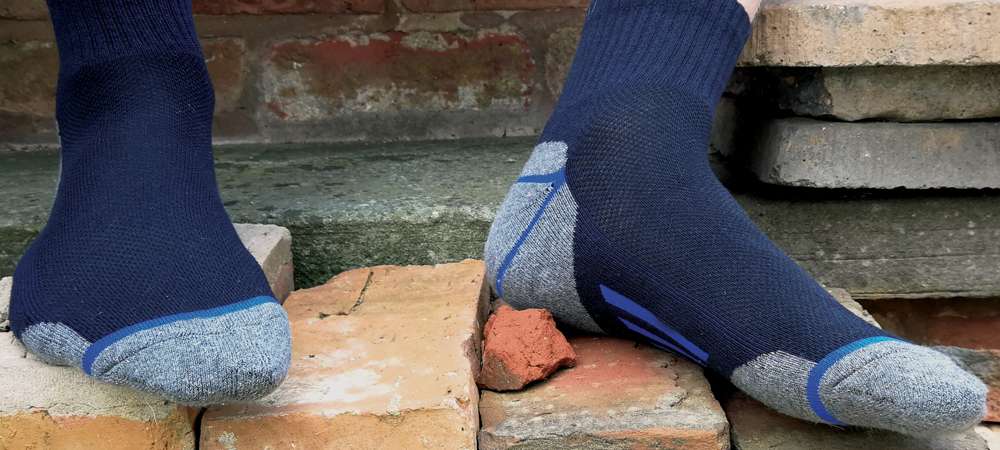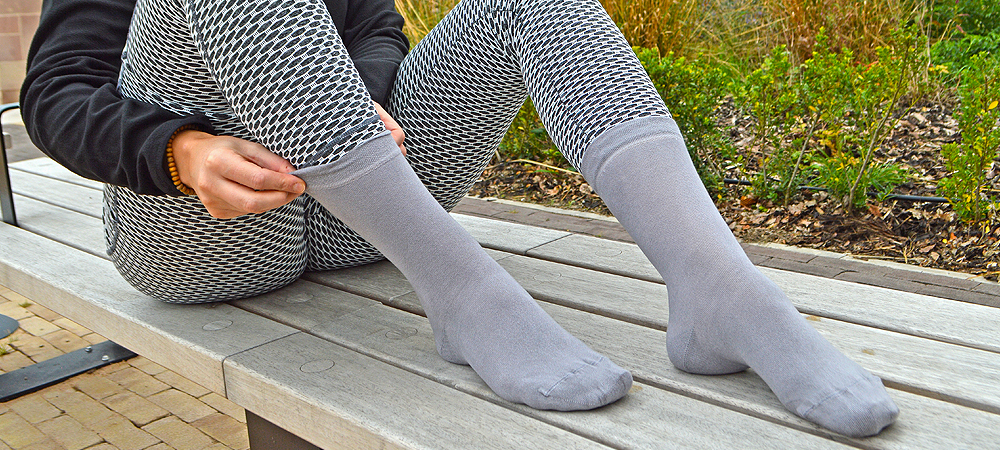When it comes to working outdoors all year round, having the right socks can make a significant difference in comfort, safety, and overall well-being. Outdoor work can expose your feet to a range of weather conditions, from cold and wet to hot and dry, so it’s essential to choose socks that provide insulation, protection, and ventilation. In this blog post, we will explore the different types of work socks available for those who work outdoors all year round and hopefullly give you some answers for how often should I replace my socks?
Wool Socks
Wool is a popular choice for outdoor workers because they provide insulation and moisture-wicking properties. They are made from wool fibers that trap air, which acts as an insulator, keeping your feet warm in cold weather. Wool socks also have the ability to wick away moisture, which helps to keep your feet dry and prevent blisters. Merino wool is a popular option as it is softer than traditional wool and less likely to cause itching.

Thermal Socks
This type of sock is made to provide extra warmth and insulation for outdoor workers who are exposed to extremely cold temperatures. They are made from synthetic materials or a blend of wool and synthetic fibers that have insulating properties. Some thermal socks are also lined with fleece for added warmth and comfort. Thermal socks are typically thicker than regular socks and are available in various styles, including ankle, crew, and knee-high.

Cushioned Socks
Designed to provide extra padding and support for outdoor workers who are on their feet for extended periods. They are made from materials like cotton, wool, or synthetic fibers and feature additional cushioning in the heel, arch, and ball of the foot. Cushioned socks can help to reduce fatigue and foot pain, making them a popular choice for workers who stand or walk for long periods.

Anti-Static Socks
Created for workers who operate in environments where there is a risk of electrostatic discharge (ESD). They are made from materials that are conductive or dissipative, which helps to reduce the buildup of static electricity. Anti-static socks can also help to prevent damage to electronic equipment and reduce the risk of injury to workers. They are available in a variety of materials, including cotton, wool, and synthetic fibers.

Compression Socks
If you need to improve circulation and reduce swelling in the feet and legs, these are the socks for you. They are a popular choice for people working outside who are on their feet for long periods as they can help to prevent fatigue and cramping. Compression socks are available in various levels of compression and in a variety of styles, including knee-high and ankle-length.

Waterproof Socks
Exactly what you expect them to do. Designed to keep your feet dry in wet and rainy conditions. They are made from materials like Gore-Tex, which is a waterproof and breathable membrane that prevents water from penetrating the sock while allowing moisture to escape. Waterproof socks can be worn alone or as a liner under other socks to provide added protection and insulation.

Breathable Socks
These are made to allow air to circulate around your feet, which helps to regulate temperature and prevent sweat buildup. They are made from materials like cotton, wool, or synthetic fibers that have moisture-wicking properties. Breathable socks are a good choice for outdoor workers who are exposed to hot and humid conditions as they can help to prevent blisters and foot odor.

High-Visibility Socks
Hi-vis socks are designed to improve worker safety by increasing visibility in low-light conditions. They are made from brightly colored materials like neon green or orange and often feature reflective stripes or accents. High-visibility socks are a good choice for outdoor workers who work in areas with low visibility, such as construction sites or roadways.

Steel Toe Socks
Designed to provide extra protection for workers who wear steel-toe boots. These socks have a reinforced toe area that is designed to fit snugly around the steel cap of the boot, providing extra cushioning and protection. Steel toe socks are typically made from materials like cotton or synthetic fibers and are available in a variety of styles, including ankle and crew.

Anti-Fungal Socks
These will help prevent the growth of fungi and bacteria on the feet, which can cause infections like athlete’s foot. They are made from materials like bamboo or silver fibers, which have natural anti-fungal properties. Anti-fungal socks can help to prevent foot odor and reduce the risk of fungal infections, making them a popular choice for outdoor workers who are exposed to moist environments.

Toe-Separating Socks
Created to provide added comfort and prevent blisters by separating each toe. They are made from materials like cotton or synthetic fibers and are available in a variety of styles, including ankle and crew. Toe-separating socks can help to reduce friction between the toes, preventing blisters and other foot injuries.
When choosing work socks for outdoor work, it’s essential to consider the specific requirements of your job and the weather conditions you will be exposed to. Look for socks that provide the right level of insulation, protection, and ventilation for your needs. It’s also important to choose socks that fit properly, as socks that are too tight or too loose can cause discomfort and foot injuries. In addition to choosing the right work socks, there are other steps you can take to keep your feet healthy and comfortable while working outdoors. Here are some tips:
Keep your feet clean and dry. Wash your feet regularly and dry them thoroughly, paying special attention to the areas between your toes.
- Wear shoes or boots that fit properly. Shoes that are too tight or too loose can cause blisters, sores, and other foot injuries. Make sure your shoes fit properly and provide adequate support.
- Rotate your shoes. Wearing the same shoes or boots every day can cause them to wear out quickly and can also increase your risk of foot injuries. Rotate your shoes or boots regularly to give them time to air out and recover.
- Use foot powder. Foot powder can help to keep your feet dry and prevent foot odor. Apply foot powder to your feet before putting on your socks and shoes.
- Stretch your feet and legs. Take breaks throughout the day to stretch your feet and legs, which can help to prevent cramping and fatigue.
In conclusion, choosing the right work socks is essential for outdoor workers who are exposed to a range of weather conditions and hazards. Look for socks that provide the right level of insulation, protection, and ventilation for your needs. Consider the specific requirements of your job and the weather conditions you will be exposed to. By taking steps to keep your feet healthy and comfortable, you can improve your overall well-being and productivity on the job.








